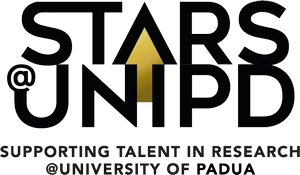
STARS Grantee: Andrea Mattarei
 Project: CHEMPROCALIM
Project: CHEMPROCALIM

Department: Pharmaceutical and Pharmacological Sciences
Total Contribution: Euro 139.186
Call: STARS-2017-StG
Project Duration in months: 24
Start Date: 15/03/2018
End Date: 14/03/2020
CHEMPROCALIM - Development of new chemical probes for organelle-specific real-time calcium imaging
Calcium (Ca2+) signalling is one of the major signal transduction pathways in living systems and many efforts have been devoted to the generation of tools to measure its intracellular concentration ([Ca2+]). As a result, cytosolic [Ca2+] can be routinely measured using standard fluorescence microscopy techniques. In recent years, attention of researchers moved to Ca2+ dynamics inside intracellular organelles and the need for organelle-targeted indicators has become critical. Several genetically encoded Ca2+ indicators (GECIs) targeted to specific organelles have been developed so far. However, they suffer from different drawbacks i.e. the need of invasive procedures to be delivered, not applicable to all cell types, slow kinetics of Ca2+ binding and unbinding, low dynamic range, scarce brightness, and affinity for Ca2+ not readily controllable. The major goal of the project CHEMPROCALIM called for the development of new tools to monitor real time [Ca2+] in specific subcellular compartments.
During the project we have developed and fully characterized the first mitochondria-targeted ratiometric fluorescent chemical Ca2+ indicator (mt-fura-2). When loaded in different cell types, mt-fura-2 shows proper mitochondrial localization and accurately measures matrix [Ca2+] variations. Notably, mt-fura-2 is able to report mitochondrial matrix [Ca2+] variations also in systems where the delivery of GECIs is troublesome e.g. mouse muscle fibres, isolated adult cardiomyocytes and cultured astrocytes. This tool will allow researchers to investigate mitochondrial Ca2+ dynamics in unexplored experimental systems, to answer unsettled biological questions. The results of the project were published in the prestigious journal Angewandte Chemie International Edition and have been greeted with amazing enthusiasm from many researchers worldwide. In the very few months after publication of the results we obtained, more than 10 research groups from different countries contacted us, asking for collaborations intended to exploit mt-fura-2 in relevant biological paradigms.


